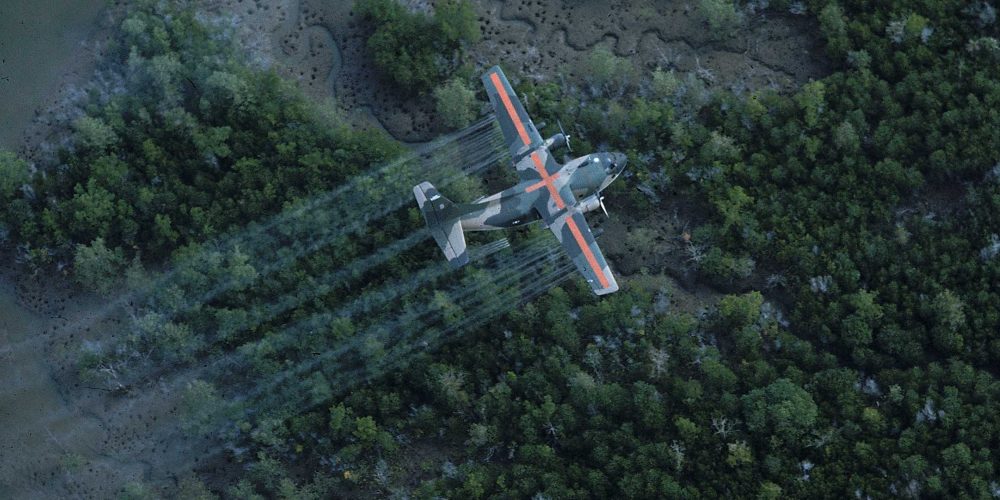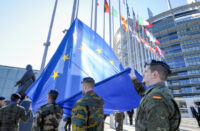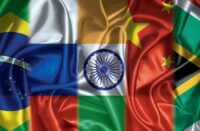In 1985 a delegation of women from the United States held a press conference in Managua, Nicaragua. This was at a time when Nicaragua was suffering a terrorist campaign, waged by the United States. The women assumed—correctly—that the site of the conference would attract more attention to their plight.
All of them were the wives, partners or relatives of men who had died or were dying from the effects of Agent Orange. Interestingly, hardly any of these men had ever set foot in Viet Nam, and nearly all of them were non-combatants. Among them were handlers and loaders in the bases where the deadly chemical was loaded onto planes that then deposited it on the unlucky people of Viet Nam.
It was not that barrels or containers of the chemical had been inadvertently damaged or burst while being handled or loaded: the agent is so toxic that even the proximity of the men to it in the loading area resulted in their exposure to cancer.
To this day Agent Orange is present in the water table of Viet Nam and is still causing birth defects. Its use must rank as one of the most heinous crimes against humanity. In some respects, the US war against Viet Nam continues.
Gas and chemical warfare is not new in the history of humanity. As early as 590 BC there are records of the Athenian military tainting the water supply of the besieged city of Kirrha with poisonous hellebore plants.
The first major use of chemical weapons on an industrial scale appeared during the First World War, when sulphur gas was used by the German army against British and Canadian soldiers. In 1917 British forces used gas against their Turkish counterparts in the battle for Gaza. Again in Gaza, but this time in 2009, the Israeli army used white-phosphorus shells over densely populated areas.
Poison gas was used by Italy against Libya as early as January 1928. In 1935 the Italian army used mustard gas against the Ethiopians during the Second Italo-Abyssinian War.
The United States and its allies used depleted uranium and white phosphorus in both the Gulf War and Iraq War. The rate of birth defects and congenital malformations in Fallujah, Iraq, after the attack on that city by US forces is said to exceed that of the Japanese cities of Hiroshima and Nagasaki after the nuclear bomb attacks near the end of the Second World War.
Napalm, developed in 1942 in a secret laboratory by Harvard University, was another chemical delight brought to the table by the United States in the Second World War and the Korean and Viet Nam Wars. American napalm was used in 1948 and 1949 in the Greek civil war against the anti-fascist resistance fighters, who had been instrumental in the Allied defeat of German forces in Greece.
This is but a short summary of this kind of warfare; many more examples are available. All bombs are, by their nature, appalling, especially if you happen to be within range of one, in which case it probably doesn’t matter much which type it is.
Since they were invented, chemical weapons have been in regular use by all the major powers; but now, suddenly, they have been noticed by our media. The resulting clamour led to the United States, Britain and France carrying out air strikes against Syrian sites for that country’s alleged use of gas weapons. These strikes were carried out before the sites could be inspected for evidence of chemical weapons.
Without being an apologist for the Assad regime, one cannot help but be cognisant of the hypocrisy of the Western media and the NATO allies as far as chemical weapons are concerned.






